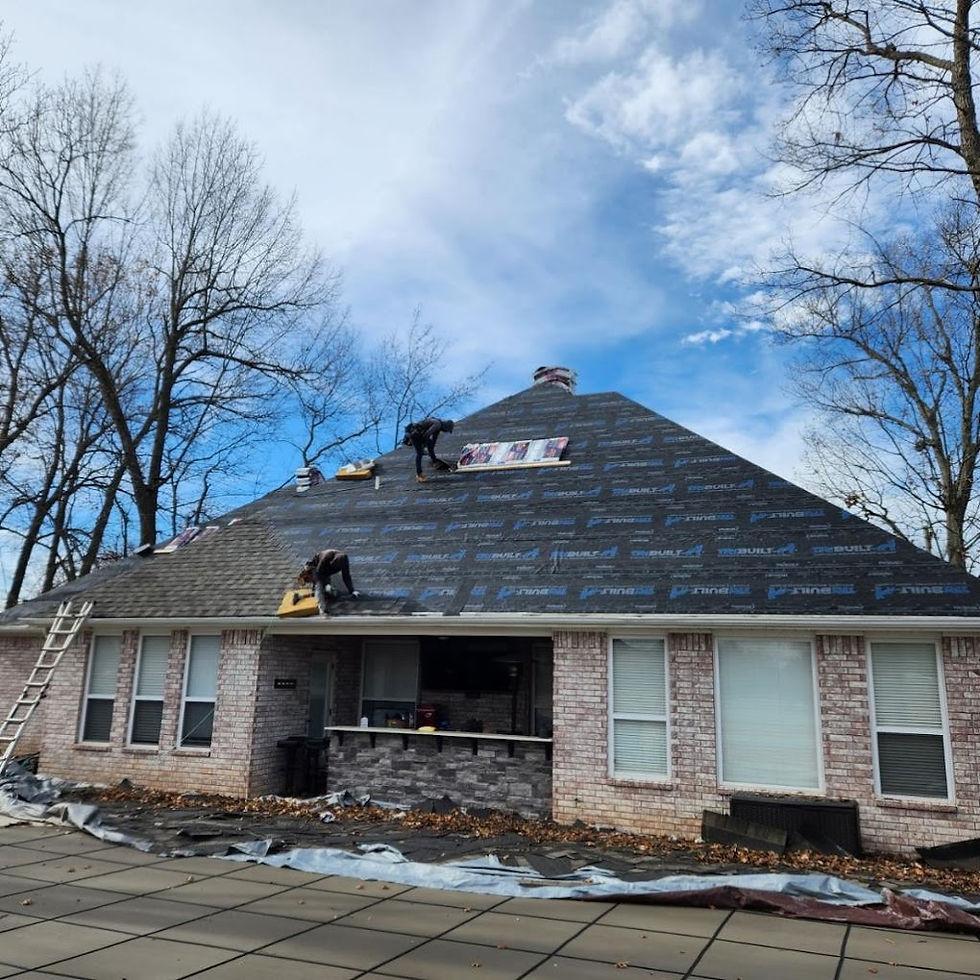Wind Resistance and Wind Speed Ratings on Roofing Shingles
- Aug 2
- 3 min read
Wind resistance rating on shingles indicates how much uplift is needed to pull the shingle from the roof. Higher wind resistant asphalt shingles compared to traditional 3-tab shingles are made with stronger materials, reinforced adhesive strips, interlocking designs, enhanced nail protection, and other features depending on the shingle and manufacturer. We receive questions on wind speed ratings, so thought it would be a good blog topic. There are a lot of factors that influence wind speed and uplift pressure on the roof including location, roofing materials, roof shape, temperature, and elements around the structure. Wind speed ratings have to do with net pressure – keep reading to learn more about wind resistance and history.
Wind resistance ratings for shingles vary by material and are based on how much force shingles can resist before being pulled off the roof deck or withstand the uplift of the wind. The strength of the seal between shingles is the key factor for performing well in high winds. Here are wind ratings for asphalt shingles and classes for metal. In Arkansas, we can have high winds and varies by location and season, but averages range from 3 to 20+ depending on the city. Northeast Arkansas has higher mean wind speeds than Northwest Arkansas. The state of Arkansas’ mean wind speed is 16.7. Alaska has the highest at 21.9 and the District of Columbia is at 13.6 with the lowest mean wind speed. During tornados and other storm events, wind speeds greatly increase – it was confirmed that an EF1 tornado touched down in Gravette in Spring with wind speeds between 86 and 100 mph. In 2020, an EF3 tornado with max winds of 140 mph impacted Jonesboro. There have been other storms across Arkansas with wind speeds of up to 190 mph.
Wind Speed Ratings for Steep Slope and Sealed Asphalt Shingles (mins – withstand uplift of)
Class A – 60 mph
Class D – 90 mph
Class F – 110 mph
Class G – 120 mph
Class H – 150 mph
Wind Load Ratings Metal Shingles
These are measured by three test standards including the uplift resistance of roof assemblies, approval standards, and structural performance of sheet metal roof and siding systems.
Class 15 – not wind speed, is a comparison rating to measure vacuum pressure and upward pressure from below on a 10’ X 10’ of material anchored on the perimeter.
Class 30
Class 60
Class 90
Wind Resistance History
The first research to be published on wind load interactions for clay and concrete roofing tiles was in the late 1970s. The research was focused on clay and concrete roofing tiles. Tile is one of the oldest types of roofing – it was used as early as 3,000 BC. In the 1800s, building codes were established because of fires that had been occurring. Clay tiles were suggested for their fire-resistant properties and were included in the building codes. Later, asphalt shingles and concrete tiles were introduced in the 1900s. In 1980, R.A. Hazelwood identified two modes for wind resistance. “1) pressure differential created between the volume of air immediately above the tiles (i.e., external pressure) and the volume of air immediately below the tiles (i.e., internal cavity pressure) and 2) local pressures on the tile surfaces due to near roof surface flows. While both conditions may cause uplift, the latter was thought to be the more dominant effect.” The net load responsible for the uplift is the algebraic sum or net pressure. Net pressure of the building flow, gust of the wind, and element flow fields.
As for asphalt shingles, research on wind resistance was started in the late 1950s by W.C. Cullen. He led a study that helped create the first standardized wind performance test for asphalt shingles. “The testing procedures involved impinging a jet of air, from a close range at a constant speed of 26.82 m/s (60 mph) for 2 h, directly onto a shingled panel set on a typical roof slope. The target of this standard focused on testing the strength of the bituminous adhesive of self-sealing shingles. This procedure is still in use by the American Society for Testing and Materials (ASTM) Standard Test Method for Wind Resistance of Steep Slope Roofing Products (Fan-Induced Method), designated as D3161/D3161M, with modifications based on testing wind speed (ASTM International, 2020a) to account for various classes of products.”
If you have questions on wind resistance or roofing, please contact us!





Comments